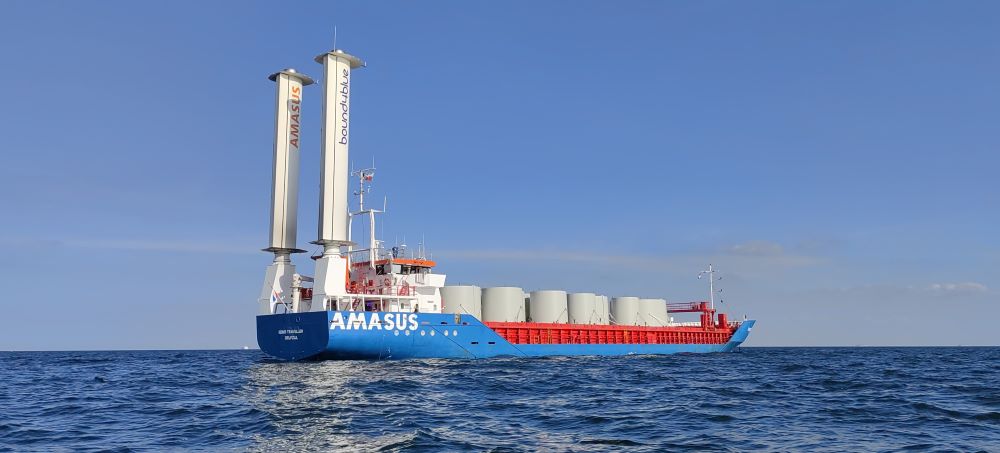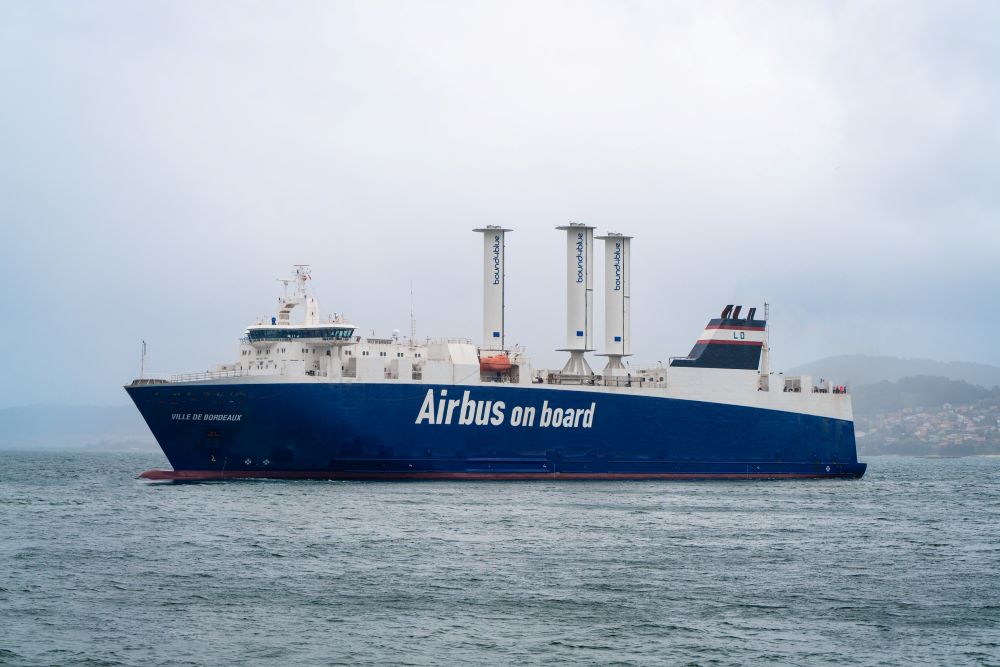By Alberto Llopis Pascual, head of aerodynamics, bound4blue
Since the decline of commercial sail-powered vessels, there has been remarkable progress in sail technology, driven by a renewed interest in sustainable maritime solutions. The modern sail has evolved far beyond the traditional cloth structures once used on clipper ships. Today’s sails benefit from advanced designs, innovative materials, increased surface areas, and the integration of autonomous control systems and weather optimisation software. These enhancements have collectively revolutionised sail performance, allowing modern sails to harness up to seven times more wind force than their historical counterparts.
One of the key developments in this area is the size and shape of sails. These have been optimised using computational fluid dynamics (CFD) to maximise lift and minimise drag, further enhancing their efficiency. Autonomous control systems now enable real-time adjustments to sail trim and positioning, ensuring that the sails are always operating at peak efficiency regardless of changing wind conditions.
However, the resurgence of sails in commercial shipping is not about returning to an era of fully wind-powered vessels. Instead, sails are being integrated as part of a broader hybrid approach, where they complement other advanced propulsion technologies. This hybrid model is essential for meeting the shipping industry’s decarbonisation goals.
Origin of suction sails
The concept of using suction to enhance the performance of aerodynamic surfaces is not new. It dates back to the 1930s when the National Advisory Committee for Aeronautics (NACA), which later became NASA, conducted pioneering research on suction wings. These studies aimed to reduce the fuel consumption of aircraft by improving the aerodynamic efficiency of their wings. NACA’s experiments demonstrated that by strategically sucking air through small perforations on the wing surface, turbulent airflow could be controlled, leading to a reduction in drag and a corresponding 8% improvement in fuel efficiency. However, the technology did not gain industrial application due to the strict safety standards that aviation must adhere to.
Fast forward to the early 1980s, and the principle of suction was adapted for maritime use by the Cousteau Foundation. Captain Jacques-Yves Cousteau, best known for his oceanographic research and the iconic vessel Calypso, sought to create a new, environmentally friendly exploratory ship. Motivated by the growing awareness of natural resource depletion and the environmental impact of human activities, Cousteau envisioned a ship that utilised wind-assisted propulsion. This led to the development of the TurboVoile, the first suction sail, designed by a research team under the Cousteau Foundation.
The TurboVoile featured a thick, aerodynamic profile that leveraged suction to generate exceptionally high lift forces. Unlike the slender suction wings of the 1930s, which were designed to improve efficiency by reducing drag, the TurboVoile’s design focused on maximising lift. The result was a sail capable of generating lift forces six to seven times greater than those of a conventional wing sail. The TurboVoile was tested on two vessels, Moulin à Vent and Alcyone, with the latter embarking on extensive sea trials around the world, demonstrating the sail’s potential in real-world conditions.
The success of the TurboVoile highlighted the potential for suction-based sails to play a significant role in the future of maritime propulsion. By combining the principles of aerodynamic efficiency with the sheer power of wind, suction sails represent a promising avenue for reducing the carbon footprint of the shipping industry while maintaining the operational capabilities of modern vessels.
Enhancing the performance
Taking the lessons learnt from the development of the Turbovoile, bound4blue set out to improve the performance of the suction sail. The culmination of this work is the eSAIL: a fully autonomous suction sail that delivers 20% more lift for the same power when compared to the Turbovoile.
How did we achieve this increase in performance? This is thanks to modern computers which allow us to design and optimise the eSAIL. These tools allow us to calculate and simulate how changes to the shape and position of certain components can affect the performance of the sail in a quick manner.
The methodology used by bound4blue was presented at the Wind Propulsion Conference 2023 (Aerodynamic optimisation of the eSAIL®, bound4blue’s suction sail for wind-assisted vessel propulsion). The paper described the methods used to optimise the performance of the eSAIL using CFD simulations. The complexity of these simulations meant we initially had to make sure the tools were accurate, which was achieved by using the TurboVoile data as validation points.
Once our tools were able to correctly capture the physics and predict lift and drag forces, parametric studies were conducted to understand how many design variables affect the performance. This allowed us to identify the best geometry which was used to design the eSAIL.
The validation process did not end there, as we sought to confirm the performance seen in the simulations. This was done by conducting wind tunnel testing, tunnel-like facility which simulates flow around a body. These facilities provide crucial data in terms of forces and pressure, which can be used to validate tools. In our case, the results showed very strong agreement between both datasets.
Ultimately, this gives us confidence in our tools and results meaning we can keep pushing to add more complexity to our simulations.

Two 17m-high eSAILs have been successfully installed on the general cargo vessel Eems Traveller, owned by Amasus
Where should they POINT?
The aerodynamics were obviously thrilled with the results obtained. However, they did not stop there and have continued to improve their knowledge, their tools with the objective of continuously improving the performance of the eSAIL.
One example of this is a tool to predict the aerodynamic behaviour of two or more suction sails in vicinity of each other. A tool we have called POINT (POtential INterference Tool) and that we will be presenting at the Wind Propulsion Conference 2024.
Before we explain how the tool works, it is important to understand what we mean by “aerodynamic interference”. When two or more aerodynamic bodies are close to each other, they will affect each other in such a way that the performance will not be as simple as the sum between all bodies. To put it simply, 1 plus 1 does not equal 2. In fact, the total will depend on many factors: how close are the bodies? What wind direction and wind speed? Are there any bodies on the ship which can affect them like cranes or cabins?
To understand how all these variables affect the performance of the eSAILs, we could run CFD simulations in the same way we did to predict the performance of a single eSAIL. However, the computational cost will escalate quickly due to the size and complexity of the simulations. Therefore, a mathematical tool was developed which would allow us to run much quicker simulations (meaning less cost) but one that is sufficiently accurate when compared to CFD simulations.
This is just a brief overview of the development work of the aerodynamics team at bound4blue. More detailed information will be presented at the Wind Propulsion Conference 2024 to be held from 22-23 October in London.




